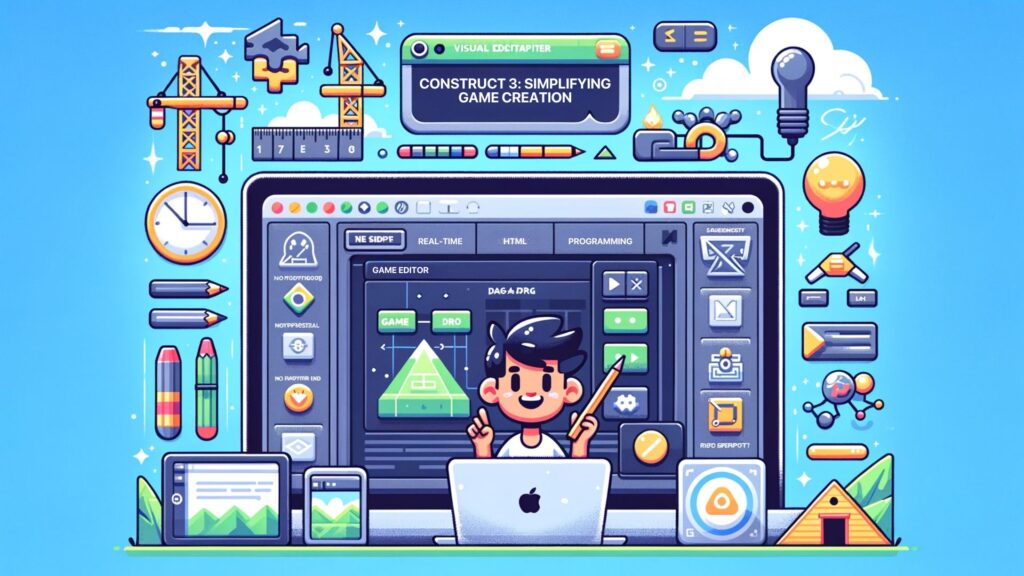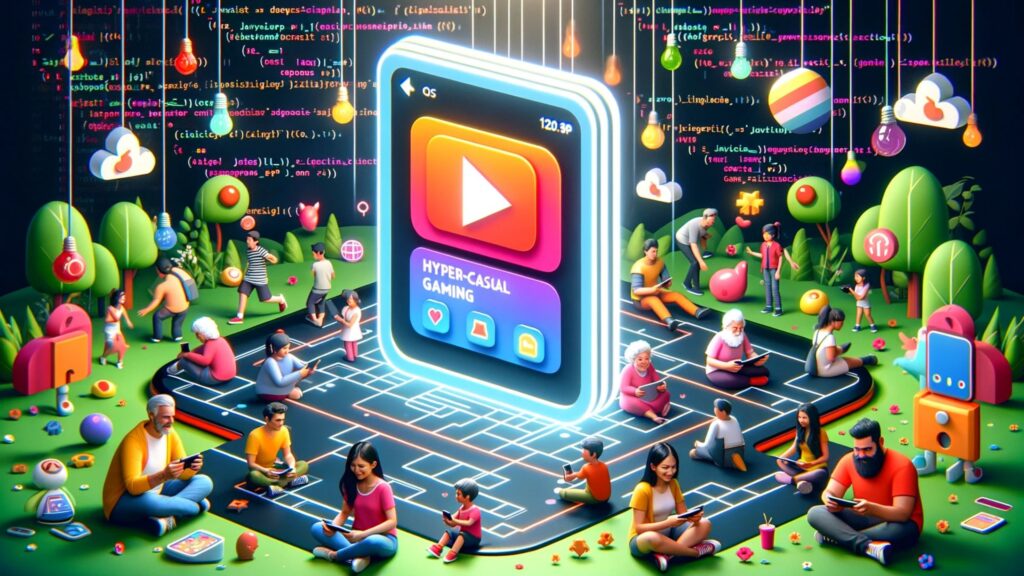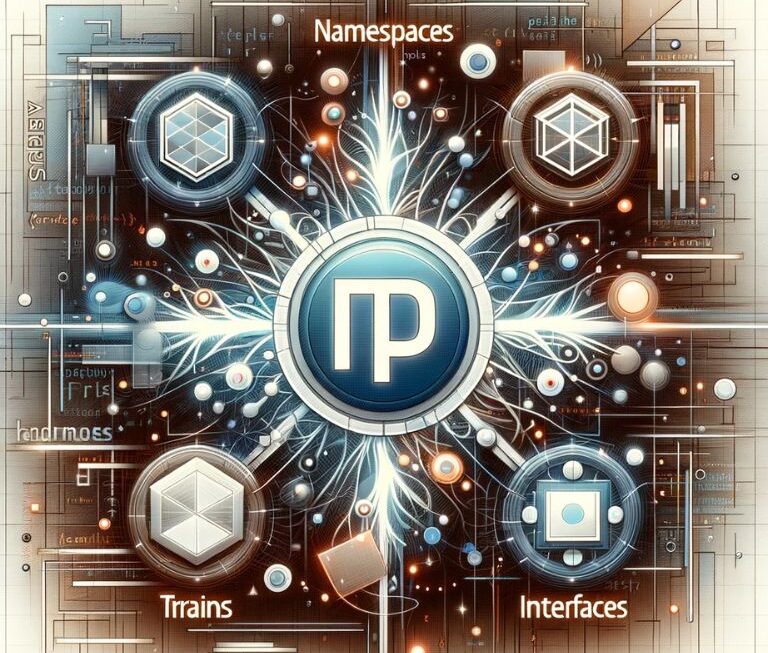The landscape of game development has been revolutionized by the emergence and evolution of JavaScript as a pivotal tool in the developer’s arsenal. This versatile programming language, initially designed to add interactivity to web browsers, has expanded its domain to become a cornerstone in game development, offering a unique blend of simplicity, flexibility, and power. This section delves into the role and evolution of JavaScript in the realm of game development, underscoring its significance and versatility in creating diverse gaming experiences.
The Evolution of JavaScript in Gaming
JavaScript’s journey in the gaming world began as a simple scripting language for enhancing web pages but quickly grew to encompass complex game development tasks. The introduction of HTML5 and advancements in web technologies have further propelled JavaScript to the forefront of browser-based game development. This synergy has enabled developers to create rich, interactive, and graphically intensive games directly within web browsers, without the need for additional plugins or software installations.
Why JavaScript for Game Development?
- Cross-Platform Compatibility: JavaScript games can run on various platforms including web browsers, mobile devices, and desktop applications. This universality ensures a wider reach and accessibility.
- Rich Ecosystem: The JavaScript ecosystem boasts an array of frameworks and libraries like Phaser, PlayCanvas, and Construct 3, each offering unique tools and features for game development. These frameworks simplify the game development process, making it more accessible to developers of all skill levels.
- Community and Support: JavaScript’s widespread adoption has fostered a robust community of developers and contributors. This community is a valuable resource for learning, sharing, and troubleshooting, thus accelerating development and innovation.
- Versatility and Performance: With the advancements in JavaScript engines and browsers, games developed in JavaScript now offer impressive performance and graphics, rivaling native applications in speed and responsiveness.
The Role of HTML5 in Enhancing JavaScript’s Capabilities
HTML5 has been a game-changer for JavaScript in game development. It has provided developers with essential tools like the <canvas> element for rendering graphics and the Web Audio API for audio processing. The seamless integration of these features with JavaScript has led to the creation of sophisticated and visually appealing games that run smoothly in web browsers.
The Future Prospects
As we look to the future, JavaScript’s role in game development is poised for further growth. Emerging technologies like serverless computing, blockchain, and eco-friendly game development practices are shaping new frontiers for JavaScript game developers. The continuous evolution of JavaScript frameworks and the ever-growing community are testaments to the enduring relevance and potential of JavaScript in the dynamic world of game development.
Understanding Key JavaScript Frameworks for Games
JavaScript’s utility in game development is significantly enhanced by various frameworks and libraries, each offering a unique set of tools and features. These frameworks not only streamline the development process but also open up new possibilities for game design and functionality. Let’s explore some of the most popular JavaScript frameworks used in game development.
Phaser: A Gateway to Interactive 2D Games
Phaser is a renowned open-source framework specifically designed for creating 2D games. It excels in building browser-based games and is praised for its flexibility and extensive functionality. Phaser leverages both a Canvas and WebGL renderer, which means games can run in any modern browser.
Key Features:
- Canvas and WebGL rendering for high performance.
- Robust physics system for realistic game mechanics.
- Easy-to-use API, making it accessible to beginners.
Sample Code: Here’s a basic example of creating a simple Phaser game scene:
var config = {
type: Phaser.AUTO,
width: 800,
height: 600,
physics: {
default: 'arcade',
arcade: {
gravity: { y: 300 },
debug: false
}
},
scene: {
preload: preload,
create: create,
update: update
}
};
var game = new Phaser.Game(config);
function preload () {
// Asset loading code here
}
function create () {
// Game creation and setup code here
}
function update () {
// Game loop code here
}
PlayCanvas: 3D Game Development Made Easy
PlayCanvas stands out as a powerful framework for developing 3D games. It’s particularly notable for being browser-based, allowing developers to work on their games from any device with an internet connection.
Key Features:
- Real-time collaboration tools.
- Efficient for developing immersive 3D games and VR experiences.
- Cloud-based, ensuring accessibility and ease of use.
Construct 3: Simplifying Game Creation

Construct 3 is a game development engine that enables the creation of games without deep coding knowledge. It’s particularly useful for beginners and hobbyists and is known for its user-friendly visual editor.
Key Features:
- Drag-and-drop functionality for easy game design.
- No programming required for basic game development.
- Supports HTML5, mobile, and desktop platforms.
Sample Code: Construct 3 primarily uses a visual interface for game development, but it also allows custom JavaScript scripting for advanced functionality.
The Rise of HTML5 in Game Development
The advent of HTML5 marked a significant turning point in JavaScript game development. HTML5 introduced new capabilities and standards that made it possible to create more advanced and interactive games directly in the browser without relying on third-party plugins.
HTML5: A Game Changer for Web Games
HTML5 brought several key features that enhanced the capabilities of JavaScript in game development:
- Canvas API: This allows for dynamic, scriptable rendering of 2D shapes and bitmap images. It is a powerful tool for creating graphics and animations directly in the browser.
- WebGL: This JavaScript API provides 3D graphics rendering capabilities. WebGL makes it possible to create complex, high-quality 3D games that run in a web browser.
- Web Audio API: This provides a versatile way to handle audio in web games, enabling developers to implement rich sound effects and music.
Example: Creating a Simple Canvas Game
Here’s a basic example of how to use the Canvas API to create a simple game:
var canvas = document.getElementById('gameCanvas');
var ctx = canvas.getContext('2d');
function drawGame() {
// Clear the canvas
ctx.clearRect(0, 0, canvas.width, canvas.height);
// Draw a simple rectangle
ctx.fillStyle = '#0095DD';
ctx.fillRect(50, 50, 100, 100);
// Game logic goes here
// Request to draw the next frame
requestAnimationFrame(drawGame);
}
drawGame();
In this example, we create a canvas element in HTML and draw a rectangle using JavaScript. The requestAnimationFrame function is used to update the game frame for smooth animations.
HTML5’s Impact on Game Development
The flexibility and cross-platform nature of HTML5 have encouraged developers worldwide to create games using this technology. HTML5 games can run on diverse devices, from personal computers to mobile phones and tablets, making them highly accessible to a broad audience.
Innovative Trends: Streaming, Cloud Gaming, and Social Play
The landscape of JavaScript game development is continually evolving, embracing trends like streaming, cloud gaming, and social play. These innovations are transforming how games are developed, distributed, and experienced by players around the world.
Streaming and Instant-Play Games
Streaming technology has enabled the development of instant-play games that can be broadcasted and played in real-time. This is particularly significant for HTML5 games, where players can enjoy gaming experiences without the need for downloads or installations.
JavaScript and Streaming: JavaScript plays a crucial role in enabling interactive features in streamed games. For instance, it can be used to manage real-time data exchange between the game and the server, ensuring a seamless gaming experience.
The Cloud Shift in Game Development
The integration of cloud technologies in game development has opened up new possibilities for JavaScript games. Cloud-based solutions offer developers the flexibility to store game assets and manage game states more efficiently.
Code Example – Integrating Cloud Services:
// Example: Fetching game data from a cloud server
fetch('https://example-cloud-service.com/game-data')
.then(response => response.json())
.then(data => {
// Handle the game data
console.log('Game data:', data);
})
.catch(error => console.error('Error fetching game data:', error));
In this example, JavaScript is used to fetch game data from a cloud server, demonstrating how cloud services can be integrated into a game’s infrastructure.
Social Gaming Experiences
Social features in games, such as sharing scores or multiplayer functionalities, have become increasingly popular. JavaScript facilitates the development of these features, enhancing player engagement and community building.
Code Example – Implementing Social Features:
// Example: Sharing a high score on social media
function shareScore(score) {
const shareUrl = `https://social-media.com/share?text=My high score: ${score}`;
window.open(shareUrl, '_blank');
}
// Usage
shareScore(4500);
This JavaScript snippet illustrates a simple way to integrate social sharing functionality into a game, allowing players to share their scores on social media platforms.
Hyper-Casual Gaming: Simplifying the Gaming Experience

Hyper-casual games, characterized by their simplicity and ease of play, have surged in popularity. These games are typically easy to understand and can be played in short bursts, making them appealing to a broad audience. JavaScript’s role in developing these types of games is significant due to its simplicity and widespread support.
Characteristics of Hyper-Casual Games
- Simple Mechanics: Typically, hyper-casual games have straightforward rules and one-touch controls, making them easy to play but hard to master.
- Minimalist Design: These games often feature clean, simple graphics, focusing more on gameplay than on detailed art.
- Short Play Sessions: Designed for quick play, these games are perfect for filling short gaps of time.
JavaScript in Hyper-Casual Game Development
Creating a hyper-casual game in JavaScript often involves simple but engaging mechanics. The following is an example of a basic game loop that could be used in a hyper-casual game:
let score = 0;
let isGameOver = false;
function gameLoop() {
if (!isGameOver) {
updateGame();
requestAnimationFrame(gameLoop);
}
}
function updateGame() {
// Game update logic, like moving objects and checking for game over conditions
score++;
}
function endGame() {
isGameOver = true;
console.log('Game Over. Your score:', score);
}
// Start the game loop
gameLoop();
// Example to end the game after 5 seconds
setTimeout(endGame, 5000);
In this example, updateGame would contain the logic for the game’s mechanics, while gameLoop ensures the game is continuously updated. This pattern is typical in many JavaScript games, especially those of a hyper-casual nature.
Performance Optimization and Security in JavaScript Games
In the world of JavaScript game development, performance optimization and security are crucial aspects that can significantly impact the user experience and the game’s overall success.
Techniques for Optimizing Performance
Optimizing the performance of JavaScript games is essential to provide a smooth and responsive experience, especially for complex games. Some common techniques include:
- Code Splitting: Dividing the game code into smaller chunks, so they can be loaded only when needed.
- Lazy Loading: Loading game assets on demand, reducing the initial load time.
- Caching Strategies: Storing frequently accessed data in cache to speed up retrieval.
Example: Lazy Loading Images in a JavaScript Game
function loadImage(url, callback) {
var img = new Image();
img.onload = function() {
callback(img);
};
img.src = url;
}
// Usage
loadImage('path/to/your/image.png', function(loadedImage) {
// Add the loaded image to the game
});
This example demonstrates a basic function to lazy load an image, a common technique in performance optimization.
Ensuring Security in JavaScript Games
Security in game development is paramount to protect both the developers’ and players’ interests. Key practices include:
- Input Validation: Sanitizing and validating user inputs to prevent security vulnerabilities.
- Using Encryption: Encrypting sensitive data, especially in multiplayer games, to protect against data breaches.
- Regular Security Audits: Conducting security checks and updates to identify and fix vulnerabilities.
Example: Basic Input Validation
function validateInput(input) {
if (/^[a-zA-Z0-9]+$/.test(input)) {
// Valid input
return true;
} else {
// Invalid input
alert('Input contains invalid characters!');
return false;
}
}
// Usage
validateInput(playerInput);
In this example, a simple regular expression is used to validate player input, ensuring that it only contains alphanumeric characters.
Emerging Technologies: Serverless JavaScript and Blockchain Integration
The integration of emerging technologies like serverless computing and blockchain is opening new avenues in JavaScript game development. These technologies offer unique benefits and challenges, shaping the future of game design and functionality.
Serverless JavaScript in Game Development
Serverless computing allows developers to focus on their game’s functionality without worrying about the underlying infrastructure. It’s particularly beneficial for scaling games based on player demand.
Benefits of Serverless JavaScript:
- Scalability: Automatically scales the game’s backend as needed.
- Cost-Effectiveness: Reduces costs as you pay only for the resources you use.
- Development Speed: Speeds up the development process by abstracting server management.
Example: Using AWS Lambda with JavaScript for a Backend Task
const AWS = require('aws-sdk');
const lambda = new AWS.Lambda();
function callLambdaFunction() {
const params = {
FunctionName: 'YourLambdaFunction',
Payload: JSON.stringify({ /* your data */ })
};
lambda.invoke(params, function(err, data) {
if (err) {
console.error(err);
} else {
console.log('Lambda function executed:', data);
}
});
}
In this code snippet, we’re invoking an AWS Lambda function from a JavaScript application. This example demonstrates how serverless functions can be integrated into a game’s backend.
Blockchain and JavaScript in Gaming
Blockchain technology offers a new level of security and transparency in games, particularly in areas like in-game transactions and player data.
Blockchain in Gaming:
- Secure Transactions: Ensures secure and transparent in-game purchases.
- Player Data Integrity: Provides an immutable record of player achievements and assets.
- Decentralization: Offers a decentralized approach to game data, enhancing security and resilience.
Example: Simple Smart Contract Interaction Using JavaScript
const Web3 = require('web3');
const web3 = new Web3('https://your-blockchain-node');
const contractAddress = 'your_contract_address';
const contractABI = [/* ABI array */];
const myContract = new web3.eth.Contract(contractABI, contractAddress);
// Interacting with the smart contract
myContract.methods.yourMethodName().call((err, result) => {
if (err) {
console.error(err);
} else {
console.log('Smart contract method result:', result);
}
});
This example shows how to interact with a smart contract using Web3.js, a JavaScript library for Ethereum. It demonstrates the potential for integrating blockchain technology into JavaScript games.
Adopting Eco-Friendly Practices in Game Development

The growing awareness of environmental issues has led to a significant shift in various industries, including game development. JavaScript game developers are now exploring eco-friendly practices to reduce the ecological footprint of their games.
Eco-Friendly Measures in Game Development
- Energy-Efficient Coding: Optimizing code for energy efficiency, reducing the power consumption of games.
- Cloud-Based Solutions: Utilizing cloud services for game hosting to reduce the environmental impact of physical servers.
- Digital Distribution: Favoring digital over physical distribution to minimize packaging waste.
Example: Implementing Energy-Efficient Animations
let lastRenderTime = 0;
const gameSpeed = 5; // Lower values are more energy-efficient
function main(currentTime) {
window.requestAnimationFrame(main);
const secondsSinceLastRender = (currentTime - lastRenderTime) / 1000;
if (secondsSinceLastRender < 1 / gameSpeed) return;
lastRenderTime = currentTime;
// Update game state
}
window.requestAnimationFrame(main);
This JavaScript example demonstrates an energy-efficient animation loop. By controlling the gameSpeed, developers can reduce the CPU usage, making the game more energy-efficient.
Benefits of Eco-Friendly Game Development
- Reduced Carbon Footprint: Eco-friendly practices in game development contribute to lowering overall carbon emissions.
- Positive Public Perception: Games developed with environmental considerations can attract players who value sustainability.
- Cost-Efficiency: Energy-efficient coding and digital distribution can also reduce operational costs.
Conclusion
The dynamic world of JavaScript game development is marked by constant evolution and innovation. As we have explored, from leveraging frameworks like Phaser and PlayCanvas to embracing the advancements of HTML5, the realm of JavaScript in gaming is a testament to the language’s versatility and adaptability. The trends we observe today, such as the rise of hyper-casual gaming, the integration of serverless computing and blockchain, and the adoption of eco-friendly practices, are shaping a future where games are not only sources of entertainment but also platforms of technological advancement and environmental consciousness. These developments underscore the importance of JavaScript as a powerful tool in the ever-changing landscape of game development.
Looking ahead, the future of JavaScript in game development appears bright and full of potential. As developers continue to push the boundaries of what’s possible, leveraging emerging technologies and innovative practices, JavaScript stands at the forefront, offering a robust and flexible foundation. This ongoing journey reflects a broader narrative in technology – one where creativity, efficiency, and sustainability coalesce to create experiences that are engaging, accessible, and responsible. For developers, gamers, and enthusiasts alike, the advancements in JavaScript game development are not just about creating games; they are about crafting experiences that resonate with a rapidly evolving digital world.




